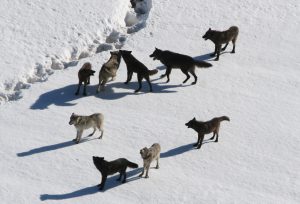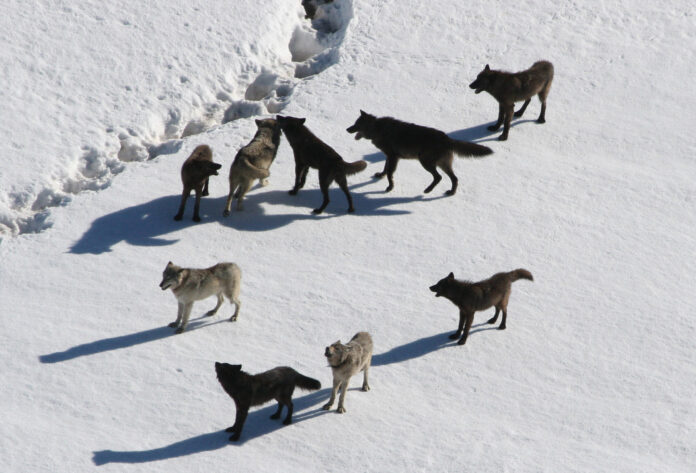BY HANNES THUM

This week, in town, hordes of children (and some adults) will take to the streets in the dark of night. Dressed as devils, monsters, zombies and witches. Dressed as the things that go bump in the night. As creatures that inhabit scary stories.
As creatures that howl at the moon.
Scaring each other for a candy bar and a giggle. The rush of adrenaline an amusing tradeoff for the rush of sugar. The ways that we treat fear like a plaything.
A darker kind of fear, though, is outside of town and up in the mountains, arriving with the slightest rustle in the shadows beneath the trees in the dawn light as an elk herd grazes nearby.
Last week, we were walking a remote ridgeline when, suddenly, in the snow in front of us, we came across elk tracks descending the ridge. Not normal elk tracks. These tracks looked like a car wreck, like the leftovers of a hurricane. Like a dinner plate shattered on the floor. Like a crime scene.
The fresh tracks skewed crazily down from a bedrock outcropping above the clearing and tumbled down through the snow in wild loops, churning up deep dirt from beneath the snow and spraying it from each hoofprint—dark mud strewn over the white snow. Long distances between each print showing that the animal was bounding, running.
The ragged tracks themselves were as eerily silent as the woods—the elk that had made them was long gone. But, the scene screamed to the senses that something had happened here.
And then, we saw the other set of tracks. They were so clear in the snow that the sight of them rang like bells in the hollow of my skull—alongside the elk tracks were the tracks of a wolf.
We had been walking for a long time that morning, talking in whispers. We had been taking care to not brush the loud arrowleaf balsamroot leaves with our boots and we had been pushing branches gently aside so as not to snap them as we moved. So, it was jarring to come across this sign that something so loud and violent could have occurred here, in the deep quiet.
The wolf’s footprints threaded in and out of those of the elk. When the elk tracks leapt wildly back and forth, the wolf tracks stayed straight. They followed those of the elk in a general direction, but cut the corners and moved more quickly, more efficiently. The rear paws stepped in the same places as the front paws. Deliberate.
Both sets of tracks slipped off the ridge and down into the thicker timber where the snow was even deeper and the fallen lodgepole pine trunks littered and tangled the understory. It was dark in there, and we couldn’t see what became of them.
Predation is its own kind of fear on the landscape. A howl in the night, out there, more terrifying.
Hannes Thum is a Wood River Valley native and has spent most of his life exploring what our local ecosystems have to offer. He currently teaches science at Sun Valley Community School.

